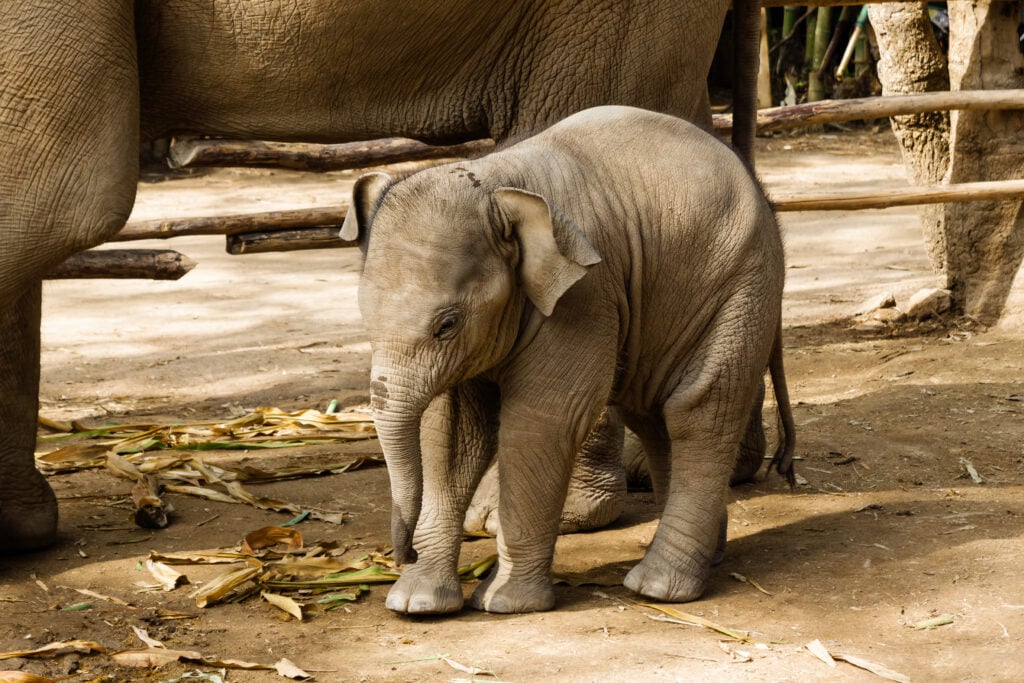Since the 1990s, an area of northern Thailand has provided refuge for injured and rescued elephants. Open to the public, the Elephant Nature Park is a popular destination that is shifting the way visitors interact with the creatures, as Thailand’s elephant population continues to suffer at the hands of tourism, deforestation, poaching and encroachment on their natural habitat.

Over the course of the last century, it is estimated that the number of elephants in Thailand has fallen from approximately 100,000 to just 3,000-4,000. Most of the remaining population lives inside National Park Reserves, one of the most prominent of which is the Elephant Nature Park. The site is located 37 miles (60 kilometers) from the city of Chiang Mai, and has rescued more than 200 elephants since its inception in the 1990s, and is currently home to over 100 elephants.
The park was founded in the 1990s by Sangdeaun “Lek” Chailert, a prominent elephant conservationist who also runs the Save Elephant Foundation. A key part of the Elephant Nature Park’s mission is allowing and encouraging tourists to interact with the elephants in activities that benefit and look after the animals, instead of just using them for human enjoyment.
Read More: The mustached monkey named after a former German emperor
“You know many tourists who have seen elephants in Thailand, they want to come and ride them,” Chailert told CNN. “But I think it’s very important to come here and care for elephants, rather than use the animals for entertainment.” Alternative activities offered at Elephant Nature Park include bathing and feeding elephants, as well as following them on treks through the jungle.
According to the park’s website, Chailert’s passion for elephants dates back to her grandfather, who had been gifted an elephant named Tong Kham. Chailert grew up and developed a strong bond with the animal, and “after witnessing the mistreatment and suffering of many elephants in the tourism industry, began providing medical aid to elephants in remote villages.”

Speaking to National Geographic, Chailert said: “Elephants teach me a lot…They have this love that humans don’t have. A love for life, unconditional love – and this is what we have to learn from them.” Work began on Elephant Nature Park in the 1990s and the 250-acre park was completed as a permanent home for elephants in 2003. Many of the animals that Chailert has taken in since have arrived injured and malnourished.
“We have to first thing, heal them. We have to heal them with love,” she explained. “We have to let nature rehab them. We have to make them feel that this is a safe place for them. Trust is the first thing that we have to go and do…When one day they start rolling in the mud, they start to enjoy trumpeting, swim on the river — and that is the day I have a tear … I have a tear of joy.”
Chailert also revealed that while the riding is not necessarily good for the elephants, it is when they are chained in a circus, used in the logging industry, or forced to stand at a temple, tied to the concrete. Despite Chailert’s work and the relief provided by national parks, the sad fact remains that the “situation for the elephants is critical”. This became particularly pronounced during the COVID-19 pandemic, when tourism numbers dwindled, and, thereby, the parks lost their means of generating money.

In June 2021, Chailert said: “Now, almost every day, I have people calling [to take their elephants]…But I can’t afford it anymore, because to rescue an elephant, even if it’s for a cheap [purchase price], I have to pay to keep and take care of it. I can’t at the moment. I wish I could do it, but I can’t. I don’t want our whole operation to collapse.”
Trunk’s Up, another Thailand-based charity working towards the conservation of elephants, set up a food bank that helped cover the cost of food for some 1,800 elephants at camps around the country.





